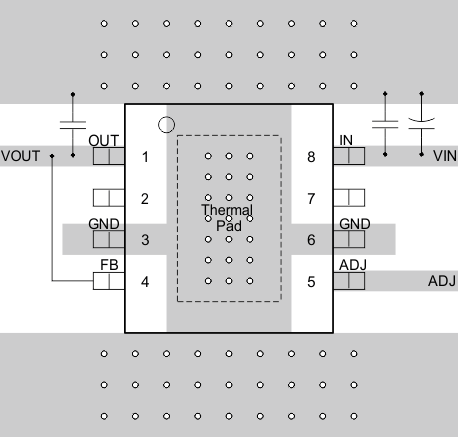ZHCSF00A April 2016 – May 2016 TPS7B4254-Q1
PRODUCTION DATA.
- 1 特性
- 2 应用
- 3 说明
- 4 修订历史记录
- 5 Pin Configuration and Functions
- 6 Specifications
-
7 Detailed Description
- 7.1 Overview
- 7.2 Functional Block Diagram
- 7.3 Feature Description
- 7.4 Device Functional Modes
- 8 Application and Implementation
- 9 Power Supply Recommendations
- 10Layout
- 11器件和文档支持
- 12机械、封装和可订购信息
10 Layout
10.1 Layout Guidelines
For the layout of the TPS7B4254-Q1 device, place the input and output capacitors close to the devices as shown in the Functional Block Diagram. To enhance the thermal performance, TI recommends surrounding the device with some vias. Minimize equivalent series inductance (ESL) and ESR to maximize performance and ensure stability. Place every capacitor as close as possible to the device and on the same side of the PCB as the regulator.
Do not place any of the capacitors on the opposite side of the PCB from where the regulator is installed. TI strongly discourages the use of vias and long traces for the path between the output capacitor and the OUT pins because vias can negatively impact system performance and even cause instability.
10.2 Layout Example
 Figure 30. TPS7B4254-Q1 Layout Example
Figure 30. TPS7B4254-Q1 Layout Example